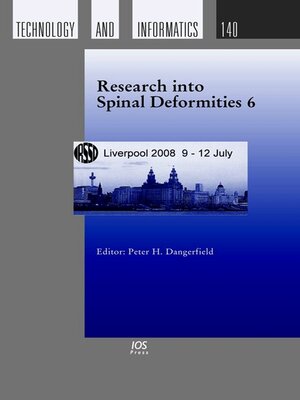Research into Spinal Deformities 6
ebook ∣ Studies in Health Technology and Informatics
By Peter H. Dangerfield

Sign up to save your library
With an OverDrive account, you can save your favorite libraries for at-a-glance information about availability. Find out more about OverDrive accounts.
Find this title in Libby, the library reading app by OverDrive.



Search for a digital library with this title
Title found at these libraries:
| Library Name | Distance |
|---|---|
| Loading... |
The year 2008 could be viewed as a time of potentially exciting breakthroughs in our understanding of the deformity of scoliosis. The rapid advances in imaging technology will allow better and more detailed images of the spine, both on its surface and deeper internally, using techniques such as Laser scanning, Magnetic Resonance Imaging and ultrasound. There is little doubt these technologies are going to advance massively, new ones will come into the hands of clinicians and researchers and a better understanding of the complex functional anatomy of the spine will be developed. This will undoubtedly aid biomechanicians to model the spine and its function, under gravity and movement, allowing new insight into progressions of curves and ways to surgically control deformities. However, it is probably the potential of biology and medical research which offers the greatest opportunities to further our understanding. The incredible advances at the molecular level, the expanding knowledge of genetics and the recent discoveries in the field of neurophysiology offer -for the first time- real potential for unraveling the puzzles of etiology. To find a solution, we must build on these new developments and look beyond the spine to the whole body to discover if its biological functions are disturbed. This publication contains the proceedings of the International Research Society of Spinal Deformities (IRSSD 2008) meeting and its aim is to contribute in our understanding of the spinal deformities.







